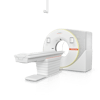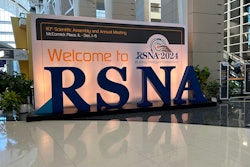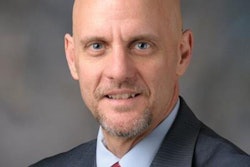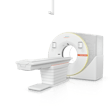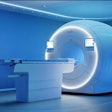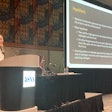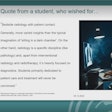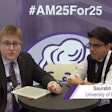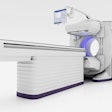CHICAGO -- AI’s progress toward multimodal, unsupervised learning foundation models is changing how imaging practices operate. And while challenges remain, the future is bright for the technology in medicine.
That was the take-home message from a December 2 talk given at RSNA 2024 by cardiologist Eric Topol, MD, founder and director of the Scripps Research Translational Institute in San Diego, CA. Topol outlined AI’s recent advancements and challenges.
“There is an opportunity here to help medicine and help patients to take us to new levels of accuracy to a far better patient-doctor relationship, and to be able to understand the risk of a person by various means,” Topol said.
 Eric Topol, MD, forecasts the future of AI and what challenges remain for the technology's use in radiology at RSNA 2024.
Eric Topol, MD, forecasts the future of AI and what challenges remain for the technology's use in radiology at RSNA 2024.
Recent AI studies and software highlight the technology’s benefits such as better diagnostic accuracy, the ability to free up time for radiologists, and stratifying patient risk for various medical conditions. This includes considering patient data from electronic health records, images, genomics, biosensors, and environmental factors.
In the age of precision medicine, AI’s ability to achieve these accomplishments can change the way radiologists can approach cancer screening, telehealth, and patient education, Topol said.
“The buzzword for many years has been precision medicine, but when you keep making the same mistake over and over again, it’s very precise,” he added. “We need accuracy in medicine and that’s not what we necessarily have.”
How generative AI and large language models can help
Topol went over the promise of large language models and generative AI, such as what’s being done via ChatGPT and Bard. He said that generative AI can add to clinical conversations. Previous reports suggest that chatbots can provide more empathetic responses to patients compared to clinicians.
Benefits in such communication include completing structured and accurate note drafts, obtaining pre-insurance authorizations, “nudging” patients about items discussed at health visits, coaching physicians on empathy, and performing coding and billing tasks, among others.
He predicted that in the future, patients with large language model support will be more autonomous.
Challenges persist
However, for AI to take the next big leap into daily clinical workflows, radiology leaders need to deal with several challenges. These include leading prospective clinical research, mitigating bias, ensuring privacy and security, and performing surveillance measures, among others. There is also resistance from some radiologists on how AI will impact their practices, including how reimbursement will be affected.
In addition, regulatory bodies need to update their criteria to prepare for what qualifies as a multimodal AI medical device.
“We’ve had over 1,000 algorithms get authorized, many of those with very shaky data,” he said. “We need transparency and compelling evidence, or the medical community is not going to change.”
What could the future look like?
Finally, Topol briefly discussed current research outside of medicine being performed for AI forecasting. Specifically, he highlighted the work of GraphCast, a multiscale graph neural network-based autoregressive model that predicts weather. He also highlighted Olink and SomaLogic for proteomics.
He added that this work may lead to eventual “digital twins,” a concept in which a virtual representation of a patient is designed to reflect a physical object accurately, which could further aid in accurate diagnosis.
Topol said he hopes attendees get excited about where the technology is going but added that “we have to do the work” to prove and validate AI.
“I hope as the years go forward, we’ll see a lot more incorporation of good influence of AI in our medical practice.”
For full 2024 RSNA coverage, visit our RADCast.
